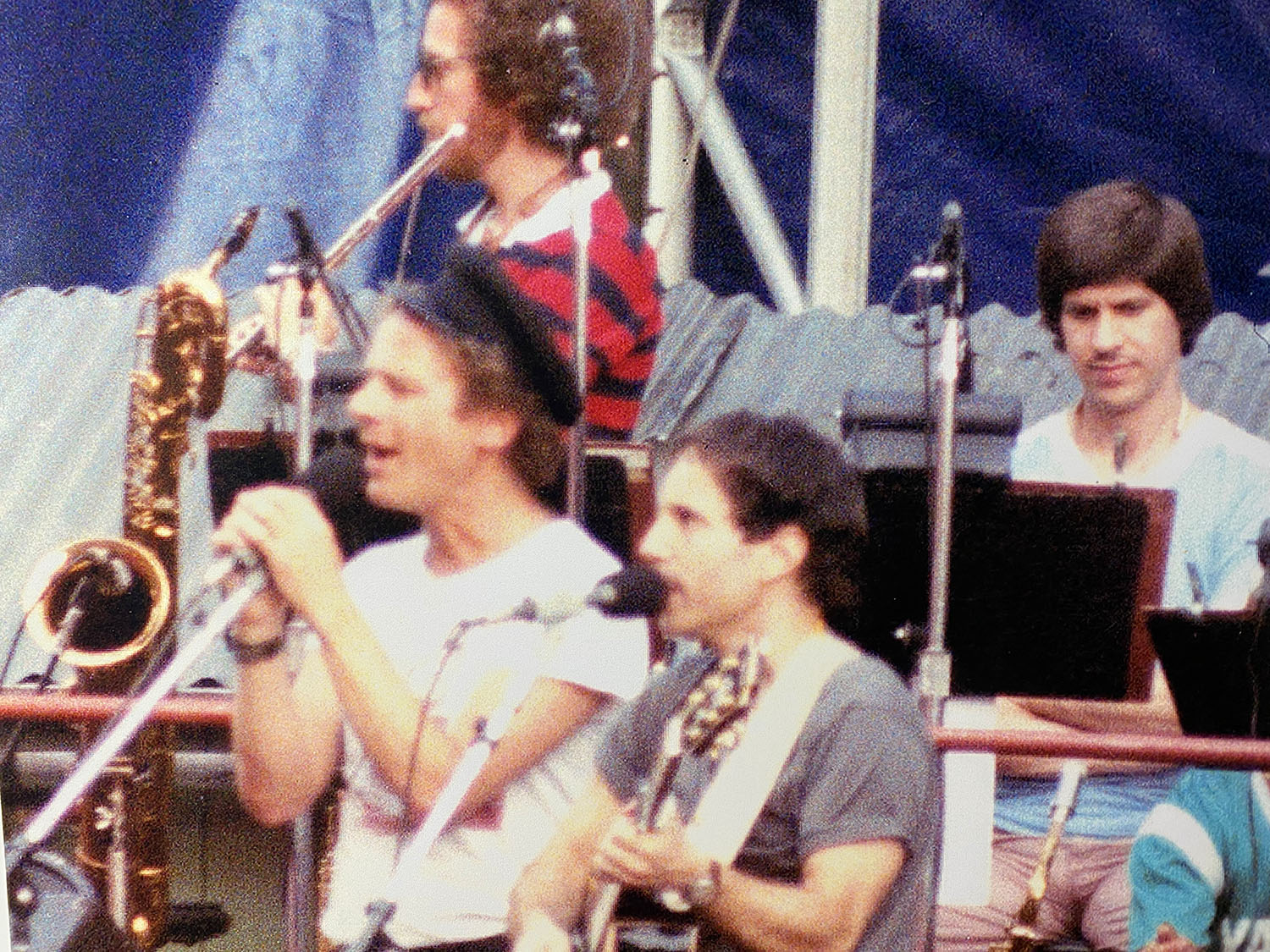STORIES | RETURN TO MAIN STORIES PAGE >>
On Tour with Simon and Garfunkel
After about ten years of being apart, Simon and Garfunkel got together once again to perform and record their Live at Central Park album, which was very successful.
They then put together a tour to Japan and Europe. In April 1982, I was called to play alto and tenor saxophones as part of their nine-piece backup band. I was really happy to get this gig since it put an end to a long ‘dry spell’ I had been going through. The pay was great plus I looked forward to the whole experience. Although, I felt a little like the ‘ugly duckling’ of the band - the only musician who wasn’t doing a lot of studio work (records/jingles). At the first rehearsal (in N.Y.C.), I went over to Richard Tee at the electric piano, to say hello. We had been in the same theory class at The High School of Music and Art. I remember him being very talented back then – he had perfect pitch and could play good boogie-woogie piano. But he didn’t seem to remember me. Steve Gadd was playing drums. We knew each other a little bit.
The band consisted of four horns, a four - piece rhythm section plus a synthesizer player. We rehearsed some of the charts. On "Still Crazy After All These Years", I had an alto sax solo. During the break, Paul came over to me, away from the others, and in a friendly, encouraging tone, he said, “You sound lethargic. More Rock ‘n Roll.” I went to a music store and bought a Dukoff metal mouthpiece – the kind David Sandborn and other sax players were using. I didn’t necessarily want to imitate him or anybody else. I just wanted to get closer to the sound or musical approach I thought Paul wanted from me on my solo. I went through some changes trying to figure out what to play. After a short time playing my new metal mouthpiece, I wasn’t feeling comfortable with it. While practicing at my apartment one day, I remembered that I had “growled” on a few of my BS&T sax solos. I decided that’s the approach I should take for my solo on Paul’s song.
At the sound check for our first concert in Osaka, Japan, I went over to say hello to Roy Halee, who was the he engineer in charge of the sound on stage. We were happy to see each other. I mentioned to him that I had been wondering who recommended me for this gig! He said that he had put in a good word for me at a meeting. He told me that I was his favorite sax player and that, at Madison Square Garden (where Miles Davis opened for BS&T), my solo on "Sympathy For the Devil" was the best sax solo he ever heard. I, likewise, had nothing but good memories of Roy, as BS&T’s engineer. He was very innovative, enthusiastic, and a lot of fun to work with. That night, during the concert, I remember feeling very calm and happy/appreciative to have the gig. But about ten seconds before my sax solo, my adrenaline increased dramatically. It was almost like I became a different person. I took this very emotional, growling solo. When I finished the horn players complimented me, but I couldn’t look at them. I was still shaking from the energy or whatever it was that was going through me. Then Paul surprised me, before he came back in singing. He announced to the audience something like, “Fred Lipsius... That was a really good solo!” I thought it was especially nice (gracious) of him to say that. I was happy that Paul liked my solo so much.
After the concert, the band had to exit the stage and get in the bus very quickly so we could leave the area before getting stuck there in traffic. I happened to get on the bus before most of the others. When Steve Gadd came in, he walked past me and told me that I had played a ‘hot’ solo. Ditto from some of the other band members. That was a time in my life when I really could use some support, so I very much appreciated the compliments! After my seven-week gig with Simon & Garfunkel, guitarist friend, Rodney Jones suggested that I use some of the money I made to finally record my first jazz album. He knew that I needed to get that out of my system and move on. My album was called "Distant Lover(s)".

